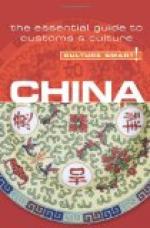|
This section contains 335 words (approx. 2 pages at 300 words per page) |
Chinese Culture 200 Ce - 900 Ce
The establishment of the Silk Road marked the beginning of a new age of culture for China. This road would connect the culturally isolated Chinese Han Dynasty with the other empires by the means of trade. China possessed silk, a valuable commodity which would drive their economy to flourish their culture. As a result, Chinese would learn from and except other cultural practices and traditions, advancing their own culture.
China, during the 600s, was in the Tang Dynasty. Here, the effects of the Silk Road where expressed. In the Tang Dynasty, literature was thriving. In fact, the Tang Dynasty was known as the "Golden Age of Poetry" for China. Poets like Du Fu published masterpieces like Three Emperors and Three Leaves. Many of these poems provided an insight into the social conditions of medieval China. In addition to the much advancement in literature, the Silk Road also brought on advancement in the technology of China.
China accepted Buddhism, as a result of an Indian influence, compelling them to produce printing techniques to record Buddhist scriptures and poetry. This technology enabled them to record important information on plates in an efficient manner. In addition, the Chinese also became advanced in the field of medicine. The Chinese instated medical schools and produced books like The Materia Medica, in which techniques of healing are described at length. These along with other scientific advancements were driven by the establishment of the Silk Road.
Throughout the foundation period and the medieval period, technological advancements were made as a result of the instation of the Silk Road. As a result, China progressed culturally on a large scale. These cultural advancements gave China an advantage, which in the future assisted them.
|
This section contains 335 words (approx. 2 pages at 300 words per page) |


